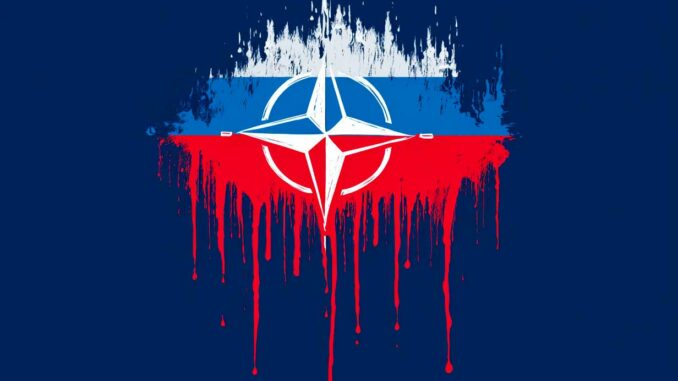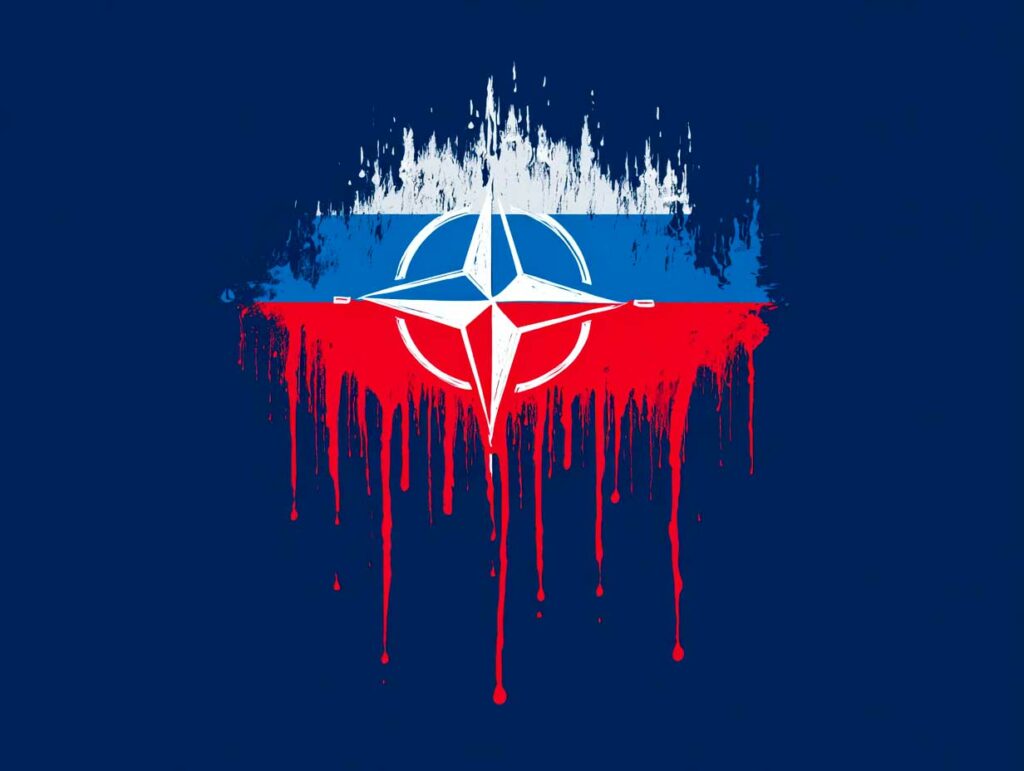
Donald Tusk and General Grynkewich warn that Russia and China could be ready for conflict in Europe as early as 2027.
Polish Prime Minister Donald Tusk announced after a meeting with General Alexus Grynkewich (NATO’s head of European operations) that by 2027, US estimates predict that Russia will be operationally capable, with China’s support, of launching a conflict in Europe. In response to this risk, Poland is strengthening its military capabilities, publishing a new National Security Strategy, increasing its defense spending to 4.7% of GDP in 2025 (with a target of 5% in 2026/2035) and plans to train 100,000 reservists annually starting in 2027. The initiative includes the implementation of the Tarcza Wschód (“Eastern Shield”) program, with a budget of over PLN 10 billion (approximately $2.3 billion) to fortify the eastern border.
Background and origin of the alert
Donald Tusk reports that General Alexus Grynkewich, recently appointed Supreme Allied Commander Europe (SACEUR), confirms US assessments that Russia could be ready for a confrontation, particularly in 2027. According to Grynkewich, estimates suggest that Russian operational capacity, potentially coordinated with China, could materialize within the next two years.
This message comes amid growing tensions since Russia’s invasion of Ukraine in 2022: Grynkewich cited a preparation window of only 18 months for the US and the European Union in the face of a global conflict.
This warning serves as the basis for the new National Security Strategy, approved by the Polish Council of Ministers on the same day, and commits to a series of proactive measures focused on military preparedness and internal stability.
Defense spending and military buildup
Poland will devote 4.7% of its GDP to defense in 2025, making it the leading NATO country in terms of this share.
The country has committed to reaching 5% by 2026, in line with the Hague Agreement at the NATO summit in June 2025, under which each member state must reach 5% of GDP in defense and security spending by 2035, with an interim check in 2029.
Poland has obtained a US loan guarantee of $4 billion, in addition to more than $11 billion in loans or guarantees already mobilized, for the acquisition of systems such as Patriot, HIMARS, Abrams, Apache, and F-35.
According to data from the Stockholm International Peace Research Institute (SIPRI), in 2023 Poland was already spending 4.15% of its GDP, or approximately $38 billion (≈ €35 billion), and the budget planned for 2025, of PLN 186.6 billion (~$48 billion), confirms this trajectory.
Structural programs and mobilization capacity
The reform includes the Tarcza Wschód (Eastern Shield) initiative, with a budget of over PLN 10 billion (≈ €2.3 billion), to fortify a 400-500 km border zone with Belarus and the Russian enclave of Kaliningrad: concrete barriers, watchtowers, bunkers, anti-drone systems, and electronic detection posts integrated with AI for surveillance and automatic coordination with allied armed forces.
Another component involves establishing annual military training for 100,000 volunteers starting in 2027, as part of an overall goal of 500,000 soldiers, including reservists, to deal with a possible large-scale mobilization.
The Homeland Defense Act of March 2022 provides for an increase in active personnel to ~300,000 and investment in the acquisition of 1,000 tanks and 600 heavy howitzers.
These technical measures aim to combine material capacity, trained human resources, and cutting-edge surveillance infrastructure.
Risk assessment and preparedness strategy
The warning of a possible confrontation in 2027 is based on the assumption of strategic coordination between Russia and China, notably a triggering incident such as an attack on Taiwan by Beijing, correlated with a Russian offensive: a scenario envisaged by Grynkewich at a conference in Wiesbaden.
According to Grynkewich, these threats are not isolated: they are converging and could lead to a two-front conflict (Europe-Asia).
The CSIS analysis notes that the militarization of the Russian economy (with defense spending forecast to reach 6.3% of GDP in 2025) would enable it to maintain a prolonged effort until 2027 and beyond.

Military plausibility of a Russia-Europe confrontation by 2027
From a strictly military and technical point of view, a direct confrontation between Russia and Europe by 2027 is certainly plausible, but seems unlikely in the form of a large-scale conventional war. Several quantifiable and verifiable factors strongly qualify this scenario:
1. The Russian army’s current operational capacity
Since the start of the invasion of Ukraine in February 2022, the Russian army has suffered significant material and human losses:
- According to Western estimates (OSINT, UK Ministry of Defense, SIPRI), Russia has lost more than 3,200 battle tanks and around 320,000 soldiers (killed or seriously wounded) as of July 2025.
- These losses represent a significant reduction in Russian operational capabilities. Even with a militarized economy, Russia will have to spend at least $300 billion to $400 billion just to return to a level of operational capability comparable to that of 2021, which would require several more years.
2. Russian economic constraints
Despite the increase in Russia’s military budget to around 6.3% of GDP, the economic situation remains very constrained:
- In 2025, according to the IMF, Russian GDP will reach around €1.7 trillion, lower than that of France (around €2.9 trillion) or Germany (€4.4 trillion).
- In absolute terms, Russia’s military budget (around €107 billion in 2024) remains lower than the combined military budgets of Europe, which total more than €300 billion.
- In addition, European and US economic sanctions severely restrict Russia’s access to critical technologies (semiconductors, advanced military electronics), significantly hindering the rapid rebuilding of a modern and effective arsenal.
3. The reality of European and NATO capabilities
In contrast, Europe (and NATO as a whole) has significantly strengthened its military posture since the invasion of Ukraine:
- European military spending, which has been increasing since 2022, now stands at 1.6% of GDP on average, with a long-term target of 3-5%, driven in particular by Poland (4.7% by 2025), the United Kingdom (3.5% by 2024) and Germany (2%).
- The United States is maintaining its presence in Europe with around 100,000 troops deployed, an increased commitment in Eastern Europe (Poland, Romania, the Baltic states), and the delivery of advanced equipment (Abrams tanks, F-35 fighter jets, Patriot missile defense systems).
4. Russia’s actual mobilization capacity
In terms of manpower, Russia attempted a partial mobilization in September 2022 (300,000 troops), with mixed results. A widespread mobilization for a confrontation in Europe would be very complex:
- Russian public opinion, already reluctant to accept partial mobilization, is showing signs of wear (according to the Levada Center, 55% of the population now opposes the intensification of military operations).
- Training and equipping a massive army (1 to 2 million soldiers) would take at least five years, according to experts at the Royal United Services Institute (RUSI), pushing Russia’s actual capacity beyond 2027.
Scenario for Russia-China coordination by 2027
The scenario outlined by General Grynkewich regarding coordination between Russia and China remains plausible from a diplomatic and strategic standpoint, but is highly complex from a military perspective:
- China, although militarily powerful (with an estimated military budget of €250 billion per year), remains economically interdependent with Europe and the United States (total annual foreign trade exceeding €1 trillion with the EU alone).
- A direct conflict in Taiwan is plausible (and constitutes a real strategic concern), but active coordination between Russia and China to simultaneously engage in open conflicts in Taiwan and Europe remains logistically and strategically unlikely.
- Such action would create a hostile global coalition (NATO + Japan + South Korea + Australia), imposing a massive geopolitical and economic cost on Beijing.
Realistic consequences and likely alternative scenarios
Even if a large-scale direct confrontation seems unlikely in the short term, alternative scenarios appear much more realistic and worrying:
1. Hybrid war in Eastern Europe
A continuation and intensification of hybrid tensions (cyber attacks, sabotage of critical infrastructure, political destabilization of border states such as Poland or the Baltic countries) is highly plausible.
2. Intensification of localized tensions
Localized military clashes, for example around Kaliningrad, in the Baltic states, or incidents in the Black Sea, remain possible.
3. Prolonged political and economic instability in Europe
The high cost of rearmament (from 2% to potentially 5% of GDP) would put considerable budgetary pressure on European economies already weakened by the current economic crisis.
Pragmatic conclusion: realistic, but unlikely as things stand
The scenario outlined by Grynkewich and Tusk of a direct confrontation between Russia and Europe as early as 2027 is technically plausible, but remains highly unlikely given Russia’s current economic, military, and human constraints and the continued strengthening of NATO.
On the other hand, the risk of hybrid conflicts, localized incidents, and even limited conflicts remains high and real. In this context, Poland’s strategy of intense preparation and massive investment in defense appears pragmatic, justified, and consistent with a realistic risk analysis.
In short, the scenario to be expected is one of regionalized or hybrid escalation rather than a large-scale generalized confrontation between now and 2027.
War Wings Daily is an independant magazine.